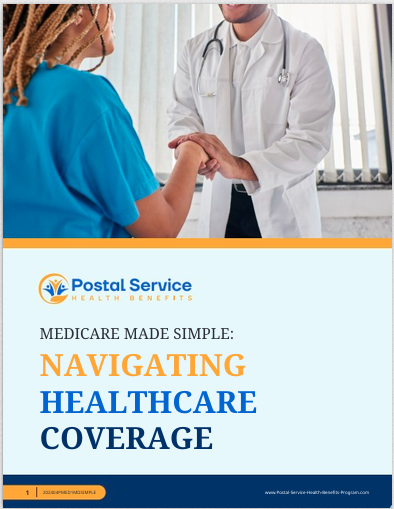Understanding PSHB and Medicare Coverage
The Postal Service Health Benefits (PSHB) Program is a critical component of the retirement benefits package offered to United States Postal Service (USPS) employees. This program, administered by the Office of Personnel Management (OPM), provides USPS retirees and their eligible family members with access to comprehensive healthcare coverage, including medical, dental, and vision benefits. Understanding the intricacies of the PSHB Program is essential for USPS retirees as they transition into retirement and navigate their healthcare options.
The PSHB Program offers a range of health insurance plans designed to meet the diverse needs of USPS retirees. These plans provide coverage for essential healthcare services, including hospital stays, doctor visits, prescription drugs, preventive care, and more. By offering a variety of plan options, the PSHB Program aims to ensure that retirees can select the coverage that best meets their individual healthcare needs and preferences.
One of the key advantages of the PSHB Program is its flexibility. Retirees have the freedom to choose from multiple plan options, allowing them to tailor their coverage to suit their specific healthcare requirements. Whether retirees prefer a comprehensive plan with low out-of-pocket costs or a high-deductible plan with lower premiums, the PSHB Program offers choices to accommodate various preferences and budgets.
In addition to medical coverage, the PSHB Program also provides dental and vision benefits to eligible retirees and their families. These benefits help retirees maintain their oral and visual health by covering routine exams, cleanings, eyeglasses, and other necessary services. By including dental and vision coverage as part of the overall benefits package, the PSHB Program aims to support retirees in achieving and maintaining optimal health and well-being.
Integration with Medicare
Many USPS retirees become eligible for Medicare when they reach the age of 65. Understanding how Medicare coordinates with the PSHB Program is essential for retirees to maximize their healthcare coverage and minimize out-of-pocket expenses.
Once a retiree becomes eligible, Medicare typically becomes the primary payer for healthcare services covered under Parts A and B. The PSHB Program then serves as secondary coverage, filling gaps in Medicare coverage and providing additional benefits not offered by Medicare alone. These additional benefits may include dental, vision, and prescription drug coverage, as well as other supplemental services.
Moreover, retirees enrolled in both Medicare and the PSHB Program may be eligible to have their Medicare premiums reimbursed by the PSHB Program. This reimbursement helps reduce retirees’ healthcare costs and ensures that they can access comprehensive coverage without facing undue financial burdens in retirement.
Choosing the Right Coverage
When evaluating healthcare options, USPS retirees should carefully consider their individual needs, preferences, and budgetary constraints. Several factors should be taken into account when choosing between Medicare and PSHB coverage:
- Coverage Needs: Retirees should assess their healthcare needs and ensure that the chosen plan(s) provide coverage for essential services, including prescription drugs, preventive care, and any specialized treatments or therapies they may require.
- Costs: It’s essential to compare the premiums, deductibles, copayments, and other out-of-pocket expenses associated with each plan to determine which option offers the best value for the retiree’s budget.
- Provider Network: Retirees should verify whether their preferred doctors, hospitals, and other healthcare providers participate in the networks associated with the Medicare and PSHB plans they are considering. Maintaining access to trusted providers can help ensure continuity of care and a positive healthcare experience.
- Additional Benefits: Consideration should also be given to any supplemental benefits offered by PSHB plans, such as wellness programs, telehealth services, or alternative medicine options. These additional benefits can enhance the retiree’s overall healthcare experience and contribute to their well-being in retirement.
Conclusion
In conclusion, the Postal Service Health Benefits (PSHB) Program is a valuable resource for USPS retirees, offering comprehensive healthcare coverage that integrates seamlessly with Medicare. By understanding how the PSHB Program works and evaluating their healthcare options carefully, retirees can make informed decisions that best meet their individual needs and preferences. Whether choosing Medicare, PSHB coverage, or a combination of both, retirees can rest assured knowing that they have access to quality healthcare services tailored to support their health and well-being throughout their retirement years.
For personalized assistance with understanding your healthcare options as a USPS retiree, including Medicare and the Postal Service Health Benefits (PSHB) Program, connect with licensed agents or healthcare professionals specializing in retiree benefits. Visit the official USPS website or the Office of Personnel Management (OPM) website for valuable resources and information about available healthcare plans and coverage options. Download our eBook guide to PSHB and Medicare Coverage for comprehensive insights and tips on navigating your healthcare benefits in retirement.





